What's New
Displaying results 1981 - 1990 of 4899
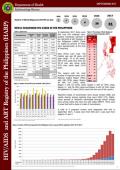
Resource | Fact Sheets,
In September 2017, there were 936 new HIV antibody seropositive individuals reported to the HIV/AIDS and ART Registry of the Philippines (HARP). Eighty-six percent of those were asymptomatic at the time of reporting.
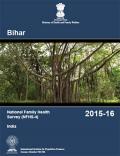
Resource | Publications,
This report presents the key findings of the NFHS-4 survey in Bihar, followed by detailed tables and an appendix on sampling errors. At the time of finalization of this report, wealth quintiles for the country as a whole were not ready. Therefore, on finalization of the national report, the breakup of key indicators by wealth quintiles for all states will be provided as an additional document and uploaded on the official website of MoHFW and IIPS.
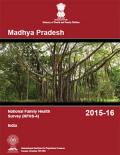
Resource | Publications,
This report presents the key findings of the NFHS-4 survey in Madhya Pradesh, followed by detailed tables and an appendix on sampling errors. At the time of finalization of this report, wealth quintiles for the country as a whole were not ready. Therefore, on finalization of the national report, the breakup of key indicators by wealth quintiles for all states will be provided as an additional document and uploaded on the official website of MoHFW and IIPS.
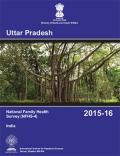
Resource | Publications,
This report presents the key findings of the NFHS-4 survey in Uttar Pradesh, followed by detailed tables and an appendix on sampling errors. At the time of finalization of this report, the wealth quintiles for the country as a whole were not ready. Therefore, on finalization of the national report, tabulations of key indicators by wealth quintile for all states will be provided as an additional document and uploaded on the official website of MoHFW and IIPS.
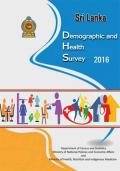
Resource | Publications,
The 2016 SLDHS was conducted by the Department of Census and Statistics (DCS) for the Ministry of Health, Nutrition and Indigenous Medicine with assistance from the World Bank. It collected information for a series of demographic and health indicators at the national, urban and rural estate and district level to monitor progress and to support the identification and development of policies, programs and interventions. The 2016 SLDHS was successfully implemented in almost all households (99 percent) selected and for almost all ever married women (99 percent) identified in the household. Data was collected using Computer- Assisted Personal Interviewing technology (CAPI) for the first time in DCS.
It is also expected that this survey will serve as a continuation of the series of Demographic and Health Surveys conducted in Sri Lanka since 1987. This will also cater the needs of complication of a number of Sustainable Development Indicators.
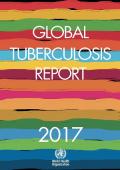
Resource | Publications,
The report provides a comprehensive and up-to-date assessment of the TB epidemic, and of progress in prevention, diagnosis and treatment, at global, regional and country levels. This is done in the context of recommended global TB strategies and associated targets, as well as broader development goals set by the United Nations.
WHO has published a global TB report every year since 1997.
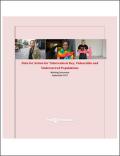
Resource | Publications,
This document is an action framework designed for countries to plan tuberculosis (TB) services for groups within their populations that are more vulnerable, underserved or at higher risk of infection and illness related to TB. These groups are referred to as key populations in the Stop TB Partnership Global Plan to END TB. They are key because addressing TB issues they face is critical to the overall goal of ending the epidemic for the entire population. Key populations vary by country and include people with increased exposure to TB due to where they live or work, people with limited access to quality TB services, and people at greater risk due to biological or behavioural factors.
The Global Plan to END TB calls for a paradigm shift, including how TB services are organized, managed and funded, moving:
- From passive to active case finding with strong engagement of civil society including key
- population-led networks and organizations
- From vertical to integrated service delivery systems
- From small incremental to accelerated substantial financial investments

Resource | Presentations,
-Commitments on ending AIDS and Fast-Track targets
-Regional overview
-Public health model of HIV
-How HIV response model can benefit other communicable diseases

Resource | Presentations,
From barriers to bridges: Increasing access to HIV and other
health services for trans people in Asia
20 September 2017
Bangkok, Thailand
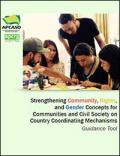
Resource | Tools,
APCASO’s Strengthening CRG Concepts Tool is meant for civil society members of Country Coordinating Mechanism (CCM), a multi-stakeholder governance structure composed of representatives from different stakeholders of the three diseases, such as government agencies, private sector groups, civil society organizations, communities affected by or living with the diseases, academics, and international and multilateral development institutions. The objective is to build capacity of community and civil society members on community engagement, human rights, and gender equality in relation to meaningful country dialogues, planning and budgeting, and program design in Concept Note submissions to the Global Fund for the three diseases (HIV, TB, and malaria).





